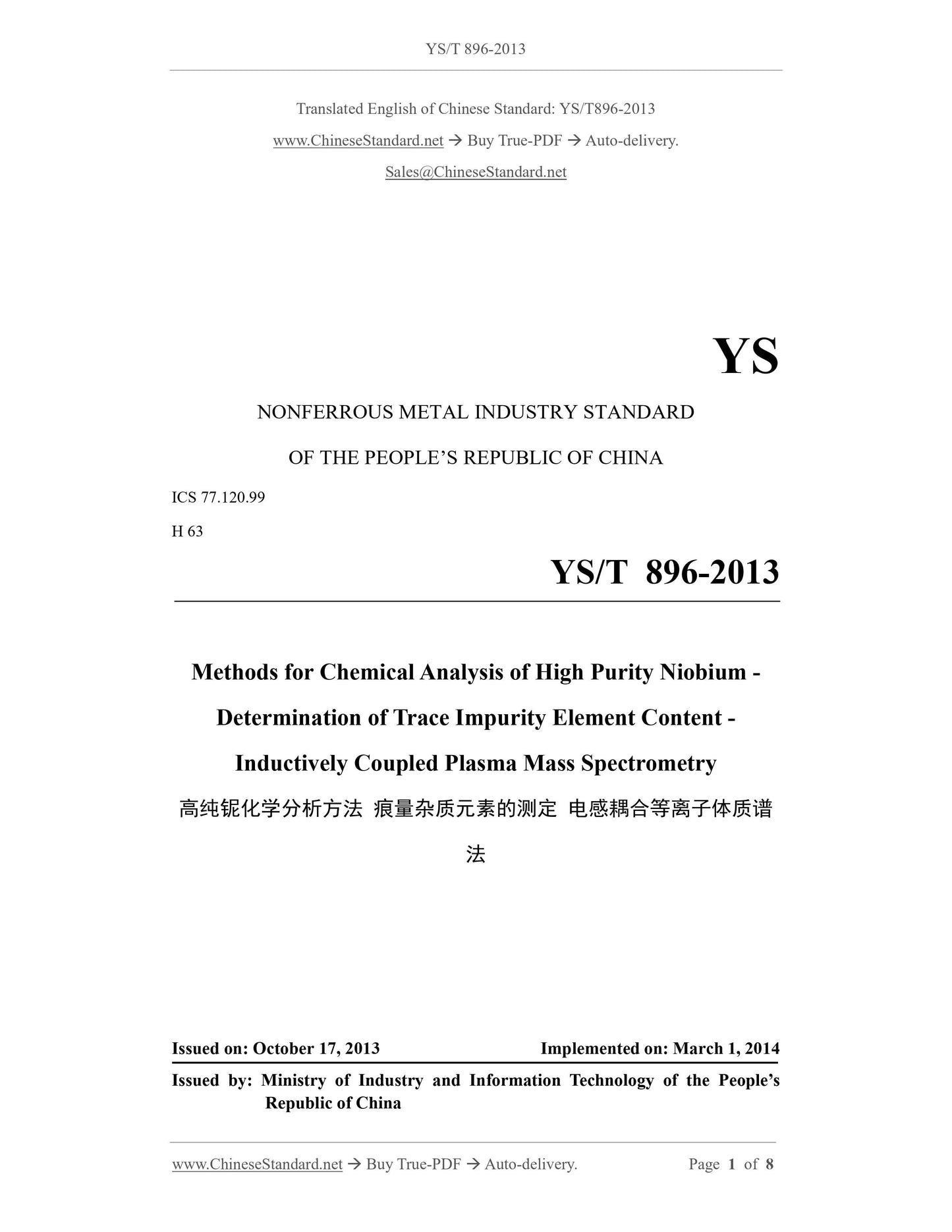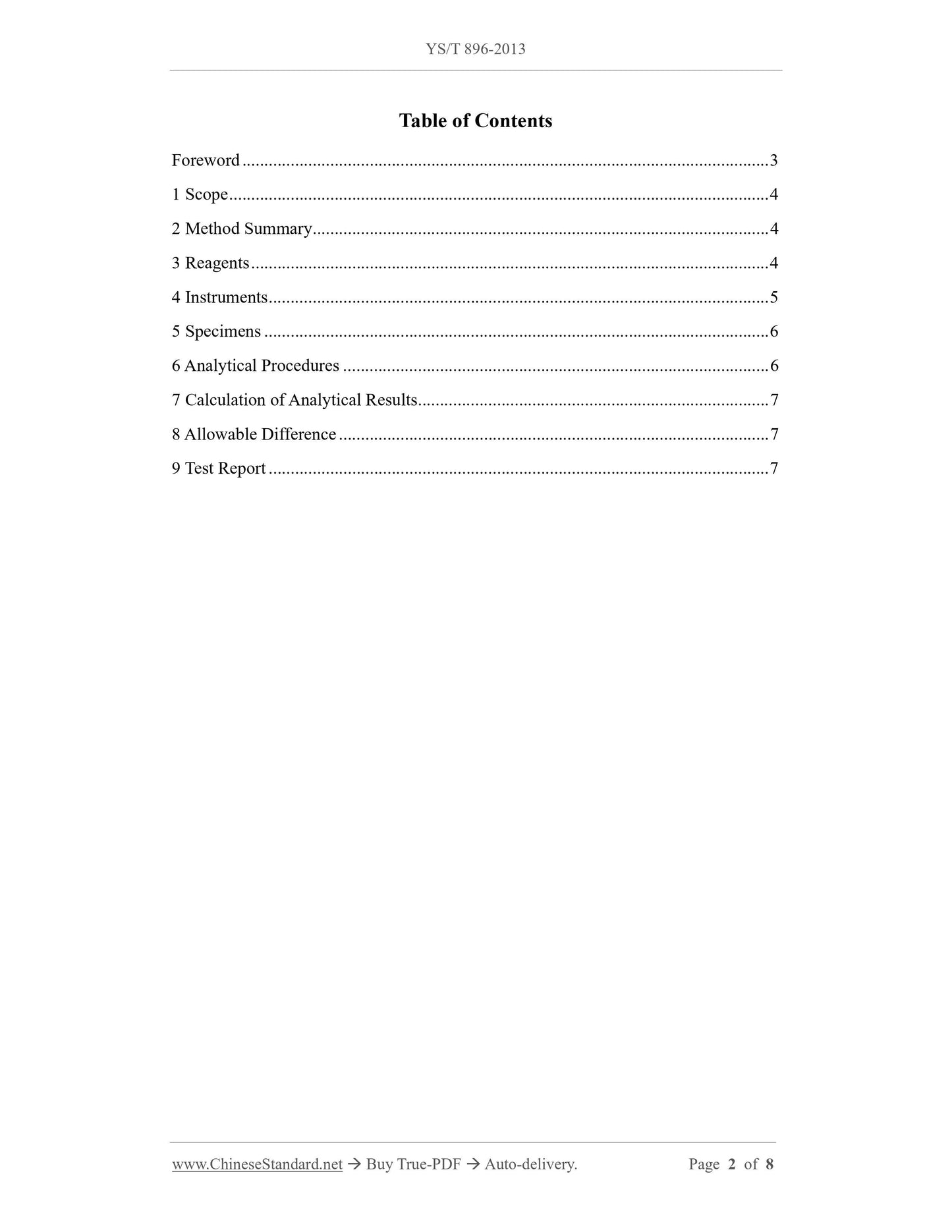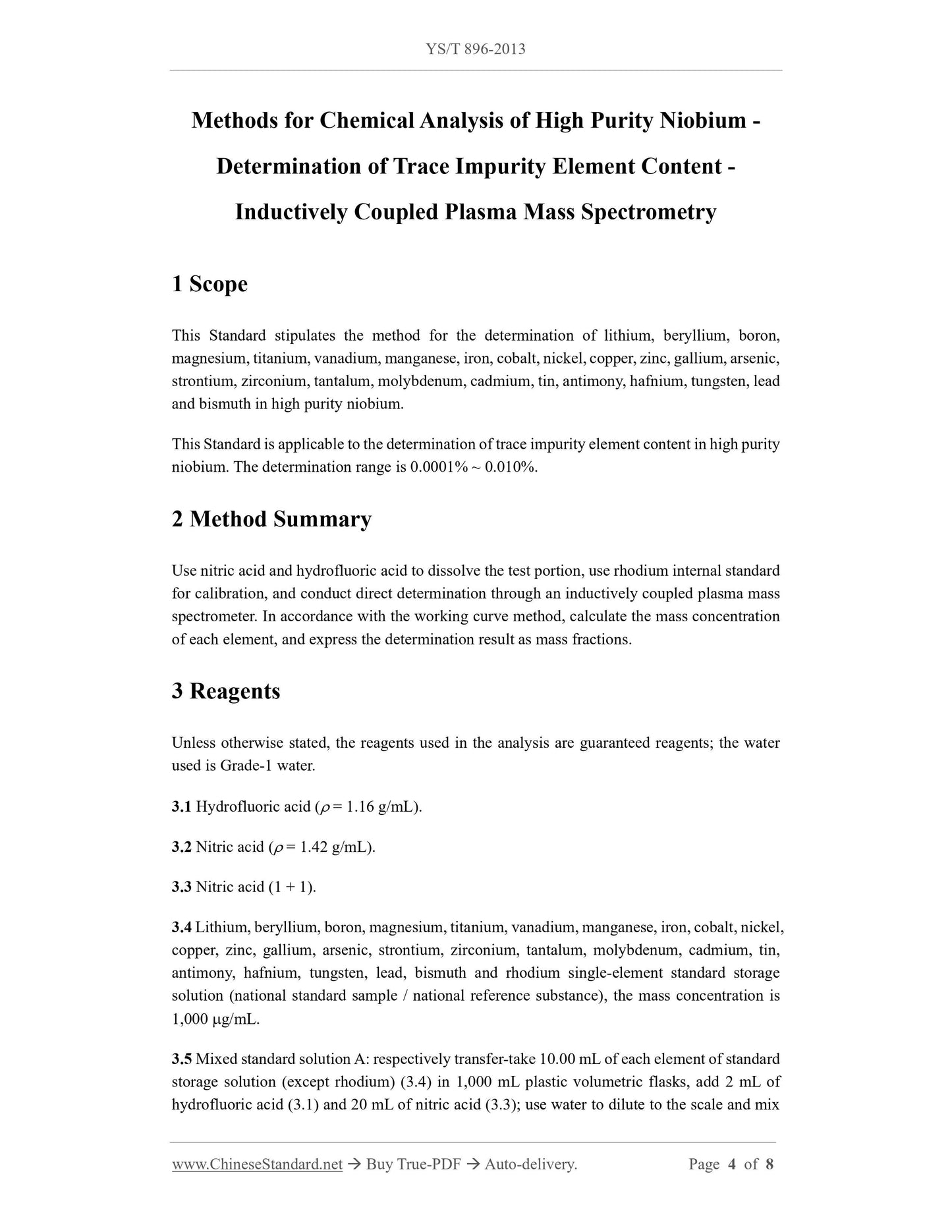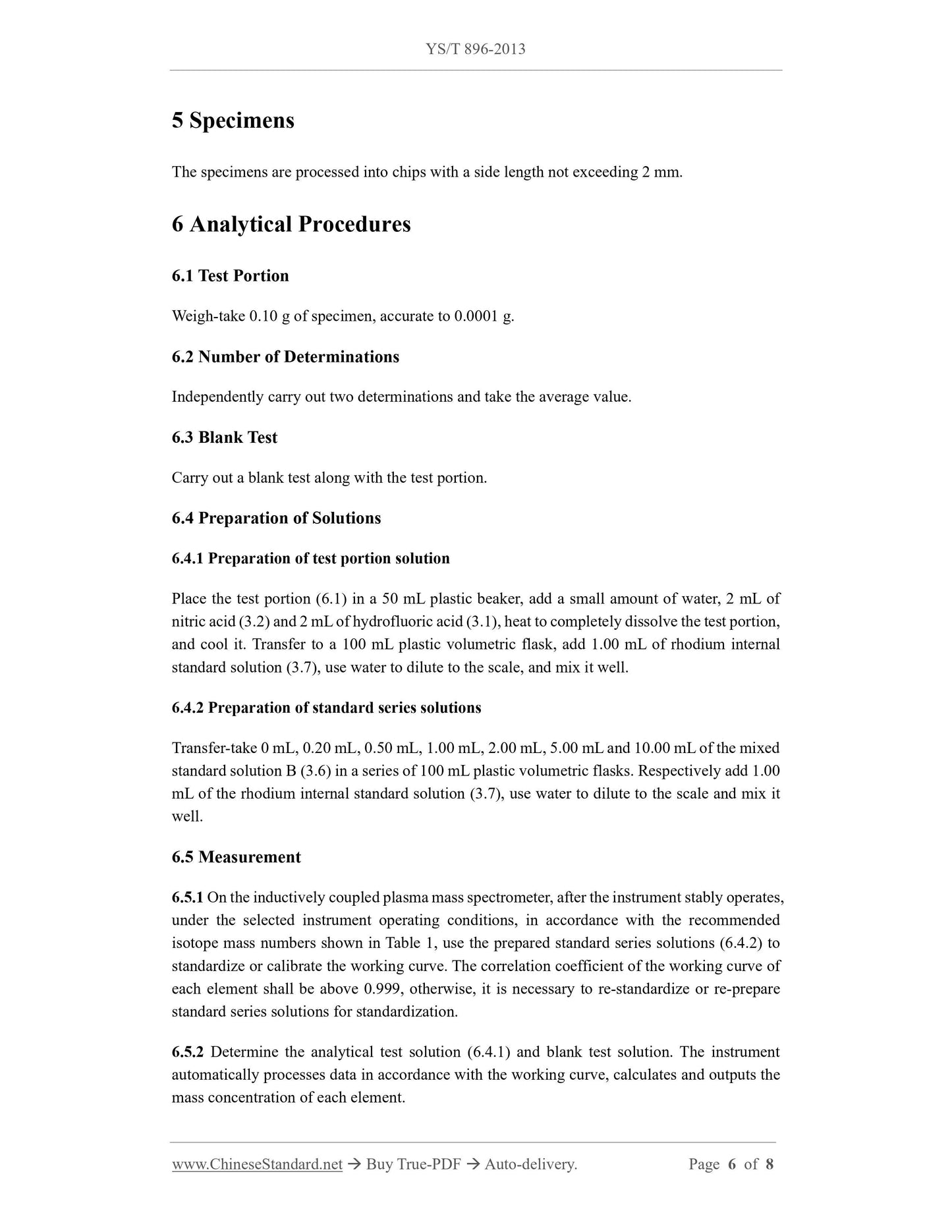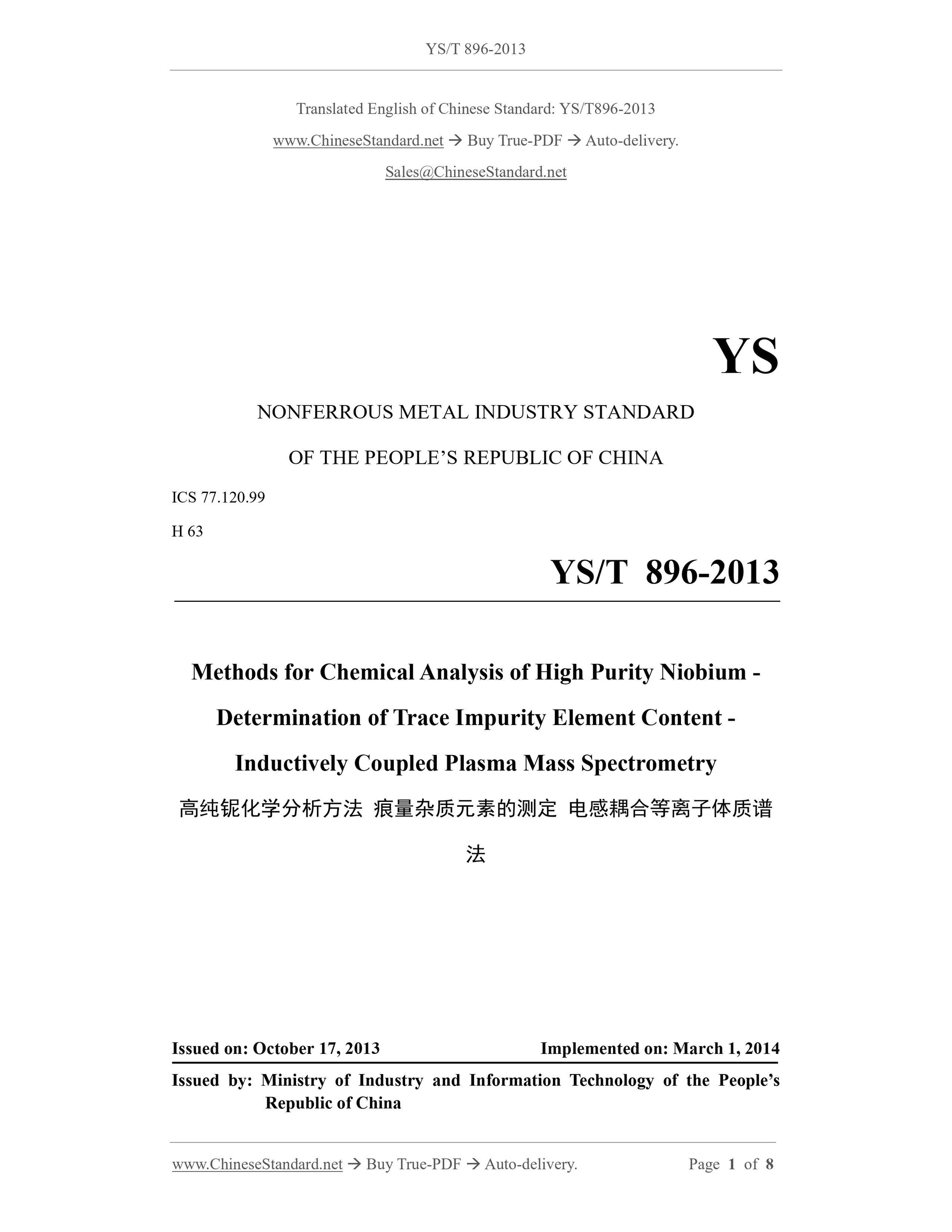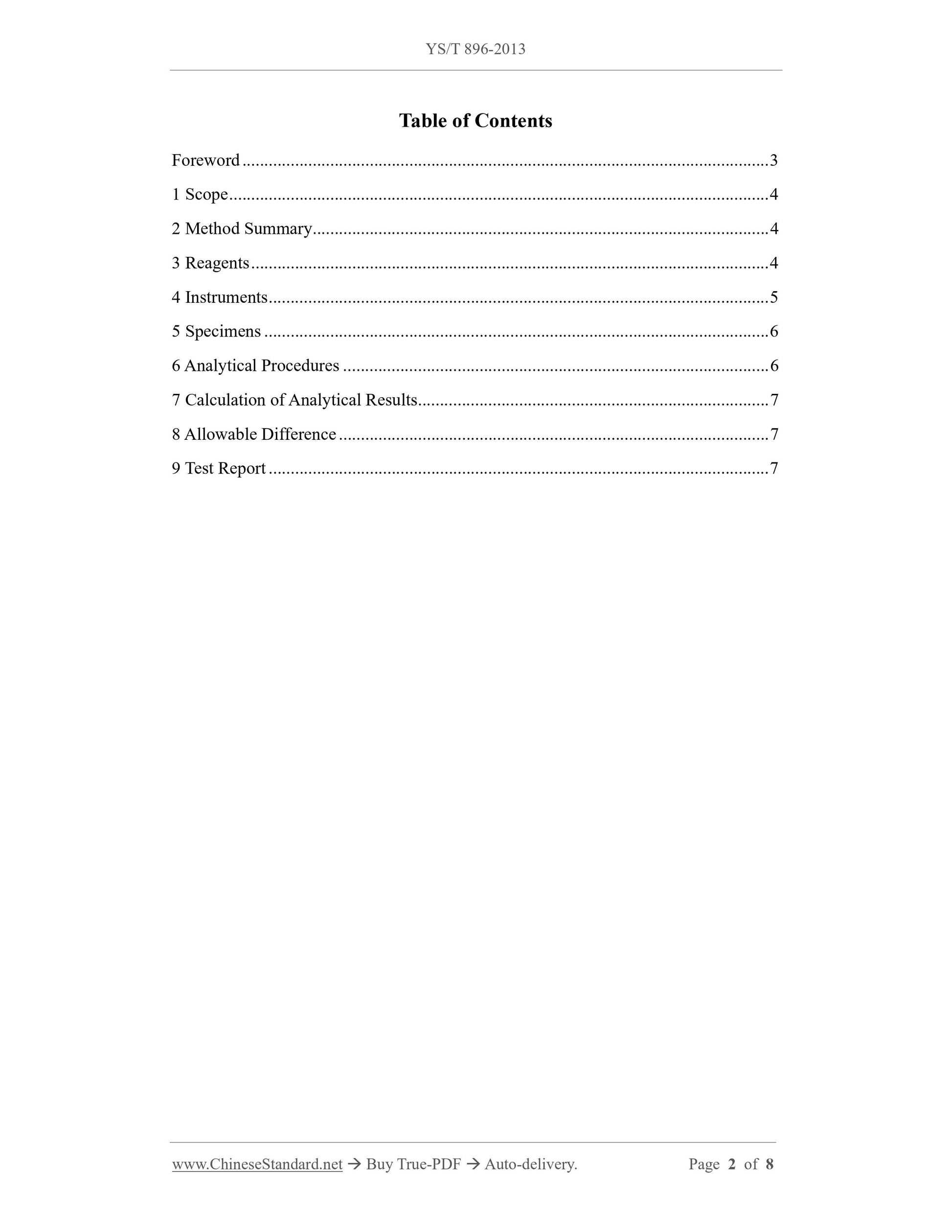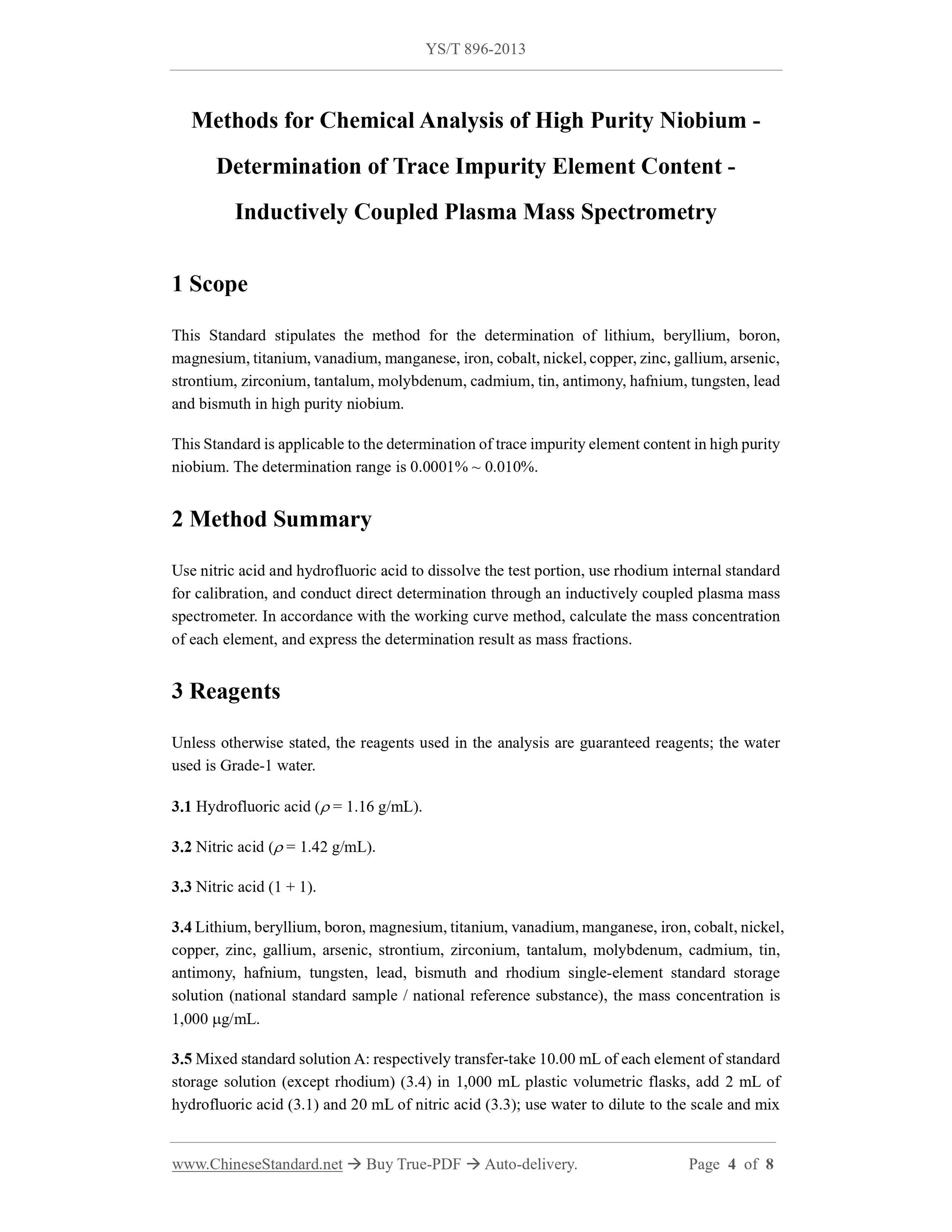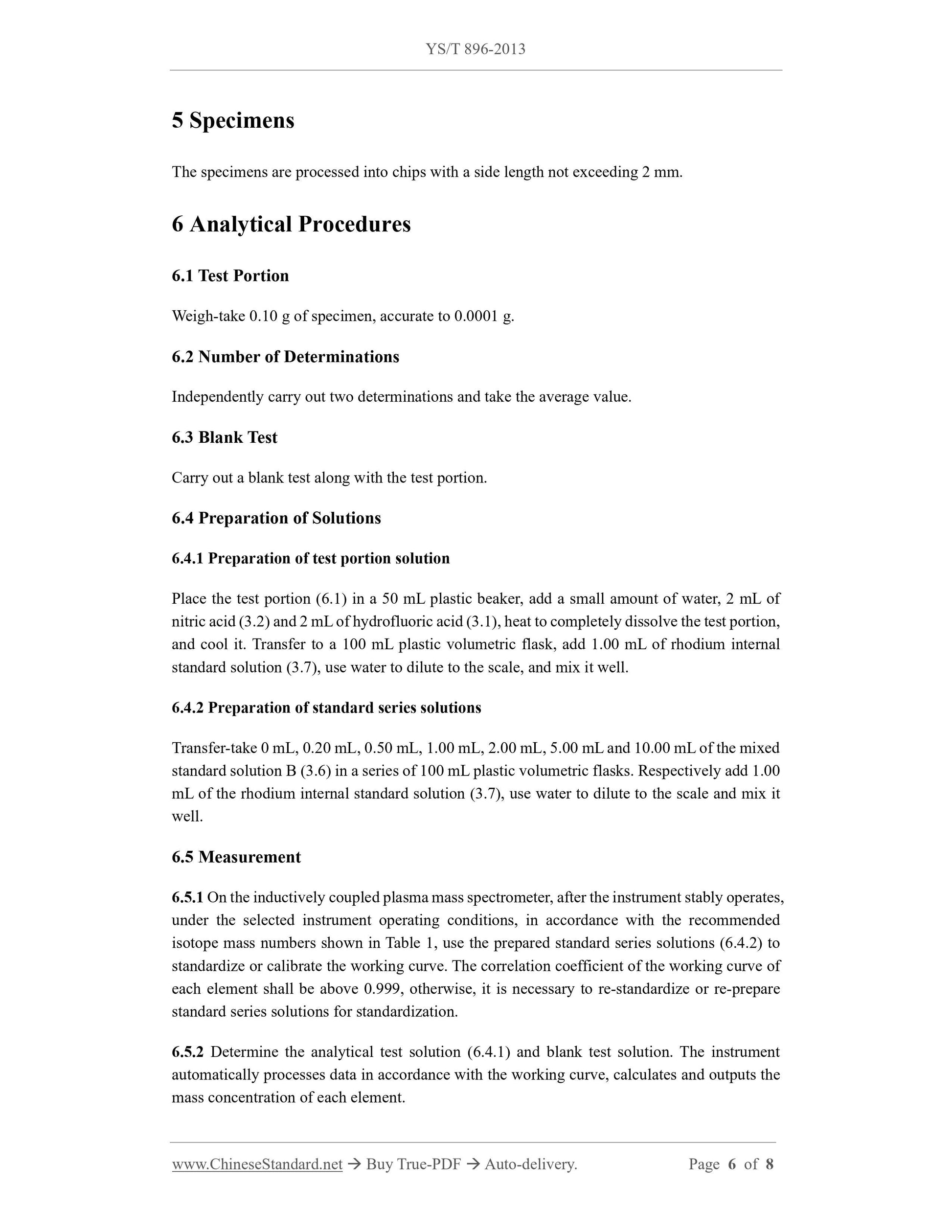1
/
of
4
www.ChineseStandard.us -- Field Test Asia Pte. Ltd.
YS/T 896-2013 English PDF (YS/T896-2013)
YS/T 896-2013 English PDF (YS/T896-2013)
Regular price
$125.00
Regular price
Sale price
$125.00
Unit price
/
per
Shipping calculated at checkout.
Couldn't load pickup availability
YS/T 896-2013: Methods for chemical analysis of high purity niobium. Determination of trace impurity element content. Inductively coupled plasma mass spectrometry
Delivery: 9 seconds. Download (and Email) true-PDF + Invoice.Get Quotation: Click YS/T 896-2013 (Self-service in 1-minute)
Newer / historical versions: YS/T 896-2013
Preview True-PDF
Scope
This Standard stipulates the method for the determination of lithium, beryllium, boron,magnesium, titanium, vanadium, manganese, iron, cobalt, nickel, copper, zinc, gallium, arsenic,
strontium, zirconium, tantalum, molybdenum, cadmium, tin, antimony, hafnium, tungsten, lead
and bismuth in high purity niobium.
This Standard is applicable to the determination of trace impurity element content in high purity
niobium. The determination range is 0.0001% ~ 0.010%.
Basic Data
| Standard ID | YS/T 896-2013 (YS/T896-2013) |
| Description (Translated English) | Methods for chemical analysis of high purity niobium. Determination of trace impurity element content. Inductively coupled plasma mass spectrometry |
| Sector / Industry | Nonferrous Metallurgy Industry Standard (Recommended) |
| Classification of Chinese Standard | H63 |
| Classification of International Standard | 77.120.99 |
| Word Count Estimation | 6,642 |
| Regulation (derived from) | Ministry of Industry and Information Technology Bulletin No. 52, 2013; industry standard for filing Notice No. 1 of 2014 (No. 169 overall) |
| Issuing agency(ies) | Ministry of Industry and Information Technology |
| Summary | This standard provides high purity niobium lithium, beryllium, boron, magnesium, titanium, vanadium, manganese, iron, cobalt, nickel, copper, zinc, gallium, arsenic, strontium, zirconium, tantalum, molybdenum, cadmium, tin, antimony, hafnium, tungsten, le |
Share
